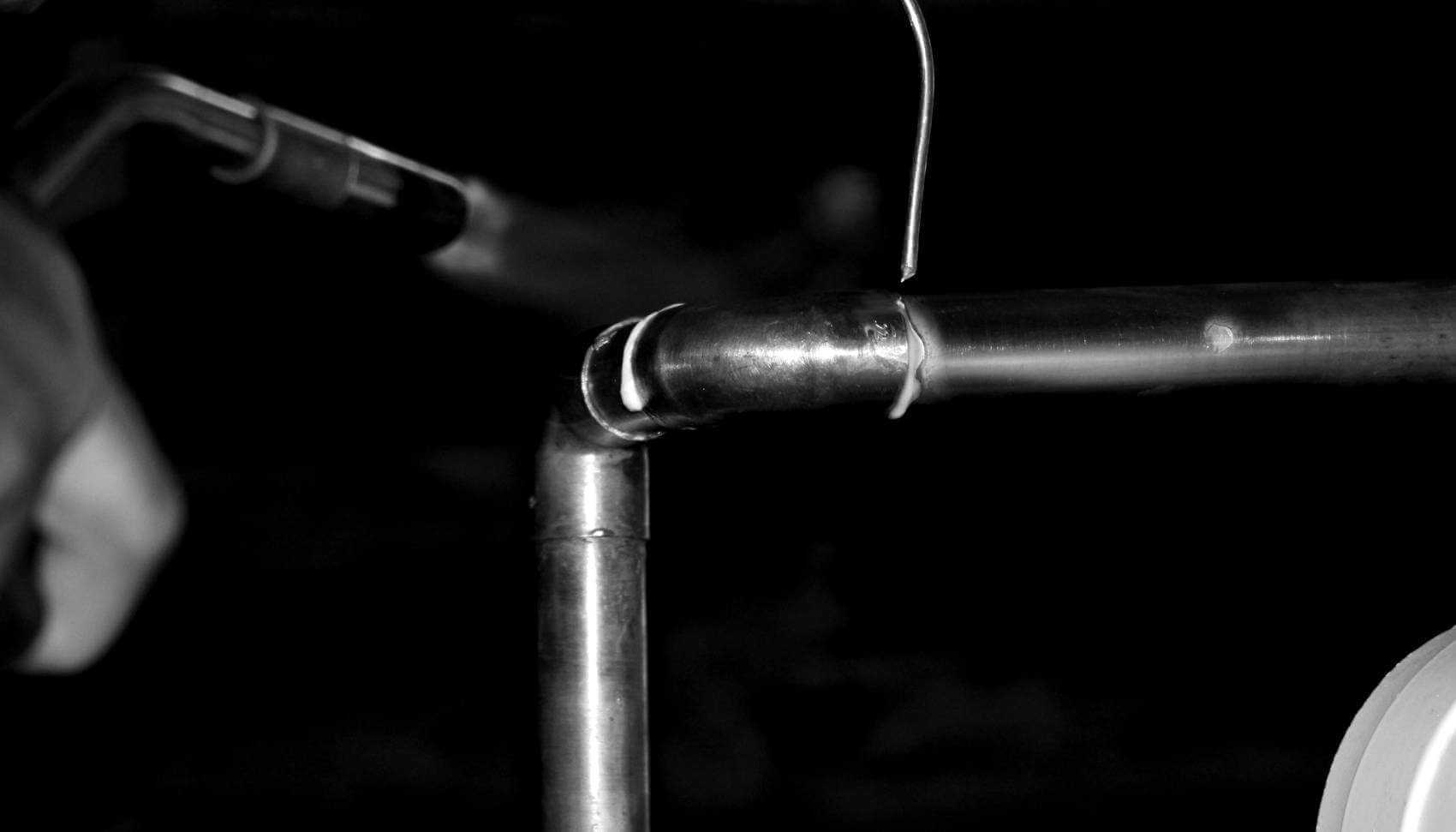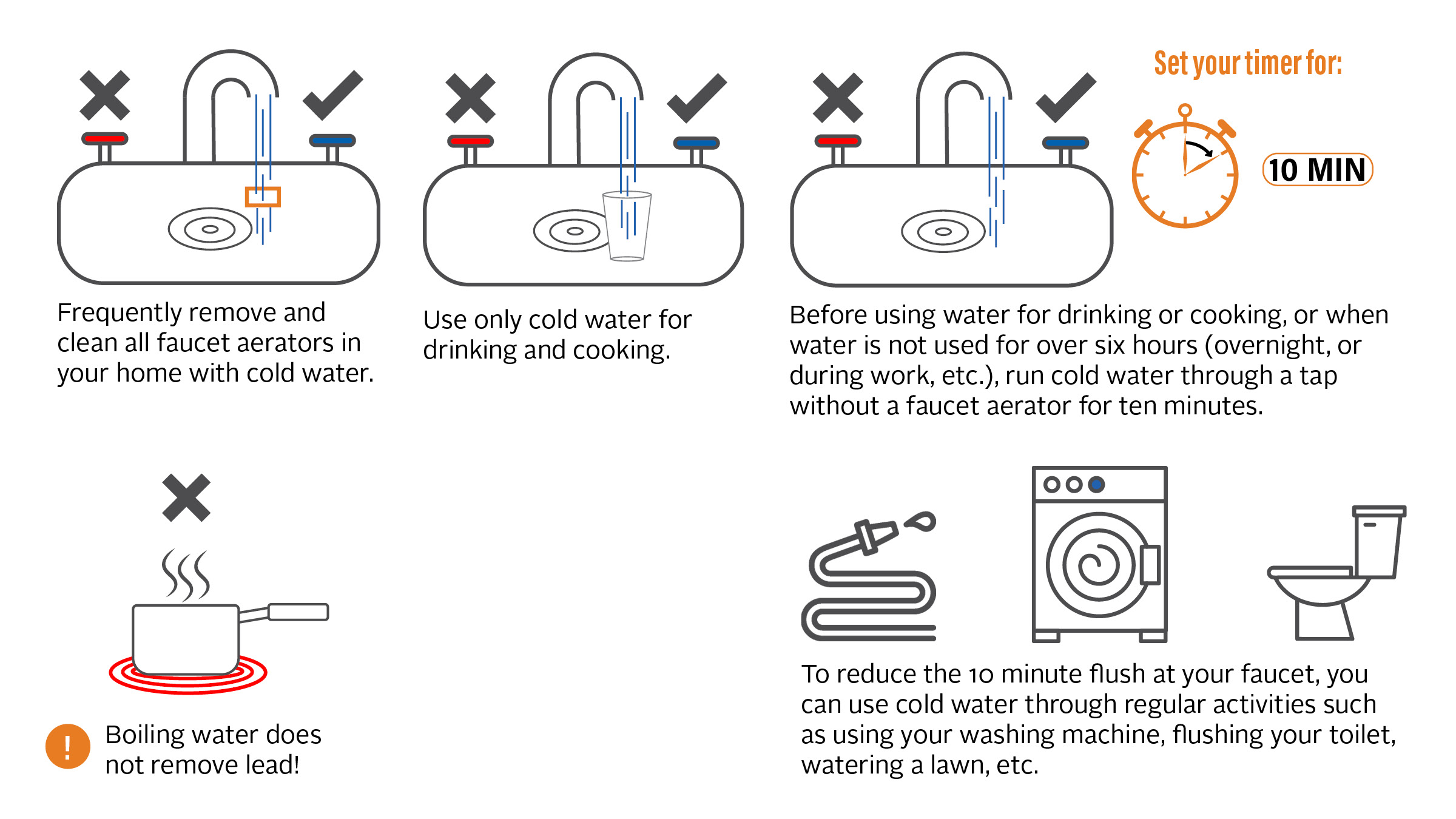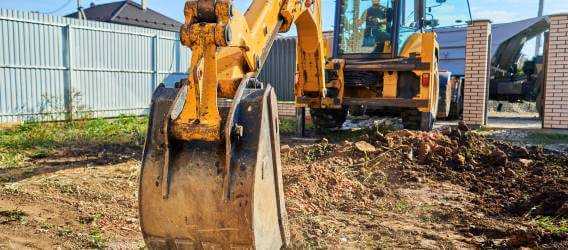The water we provide to homes and businesses is lead-free, but lead can get into the water as it moves through lead-containing solder, faucets, fittings, and service lines – the pipe that brings water into the home from the water main in the street. This happens when metal plumbing dissolves or wears away is in contact with water, a process called corrosion.
The only properties that could have a lead service line were built before 1960 within peninsular Halifax and the older areas of Dartmouth.
Learn how lead can get into drinking water:
The water service line is the pipe that connects the water main in the street to the meter inside the home. Halifax Water owns the portion of the pipe from the water main to the shut-off valve close to the property line. The pipe from the property line to the meter is owned by the Property Owner.
Before 1960, Lead was a common material for water pipes because it was easy to form into flexible pipes. In northern climates, the flexibility of lead was even more beneficial as it was able to move with the ground during freeze-thaw cycles. Lead also remained readily available throughout both world wars, as copper was being used in large quantities to supply the war efforts.
Lead service lines were used to connect a home or small building to the water main in the street in areas where there was city water prior to 1960. In Dartmouth, this is generally east of Albro Lake Road and south of Lake Banook, extending just past Prince Arthur Avenue. This area was supplied by the historic Lake Lamont water supply plant in 1960. In Halifax, this area is peninsular Halifax extending to include Crown Drive and represents the area supplied by the historic Chain Lake water supply plant in 1960.
Use the interactive map below to learn where lead service lines could have been installed before 1960.
Copper service lines began to be installed instead of lead in the '40s and '50s in Halifax and Dartmouth. To be conservative, Halifax Water only considers homes built prior to 1960 to be at risk of possibly having a lead service line.
While the use of lead service lines stopped in the '40s and '50s, lead was still used in other parts of plumbing (eg, lead-tin solder, brass fixtures and/or other fittings) until 1986, when it was banned from use in Canada. These components are not typically a concern for lead in drinking water because of Halifax Water's corrosion control program. They can become an issue if they begin to deteriorate or fail.
See how Halifax Water works to keep lead out of your drinking water:
Your water is treated to minimize corrosion of metals, including lead. We call this process corrosion control. This helps to prolong the life of water infrastructure and your home's plumbing while also keeping your water safe. Keep reading to find out more about corrosion control and Halifax Water's monitoring and research programs.
Corrosion of metals happens when water reacts with metal components in the water system and your home. Your water is treated at the water treatment plant to minimize corrosion by adding a corrosion control inhibitor called zinc-orthophosphate. Like all treatment additives, this corrosion inhibitor must meet American Water Works Association standards and National Sanitation Foundation/ American National Standards Institute Standard 60, which is a standard for additives to drinking water. This inhibitor works by producing a protective layer over the inside of pipes, which prevents the water from reacting with the metal pipe surface.
Having a lead service line doesn't mean you have elevated levels of lead in your water, but a lead service line can contribute to the risk of elevated levels of lead in drinking water. Even with a corrosion control program in place, some homes can still experience elevated lead levels in their water if there are lead components in contact with the water. Halifax Water launched the Get The Lead Out program to help property owners remove lead service lines.
Halifax Water monitors our corrosion control strategy through three programs.
- Distribution Monitoring: The corrosion inhibitor level in the water leaving the treatment plants is monitored daily to ensure that adequate corrosion control is being achieved at all times. Corrosion control parameters are also monitored throughout the water system monthly to ensure the effectiveness of corrosion control treatment.
- Residential Monitoring: Each Summer, Halifax Water works with over 100 volunteers to collect household water samples from homes throughout the water system. These samples look at the effectiveness of corrosion control all the way to your tap, with a focus on lead and copper corrosion.
- Collaborative Research Program: Halifax Water is constantly reviewing new corrosion science and studying the corrosion inhibitors' effectiveness through research partnerships with Dalhousie University and other industry experts. This program has improved the understanding of lead release in Halifax Water's system and has informed key changes to the corrosion control program. This has kept Halifax Water at the forefront of the water industry with respect to managing lead in drinking water.
Halifax Water launched the new Get the Lead Out Program in 2020. This program will remove all lead service lines by 2038. For more information on this program please visit our Get the Lead Out page.
Here's what you can do to Get the Lead Out of your water:
You can reduce your lead exposure by:
1. Removing sources of lead in your plumbing, or
2. Minimizing your lead exposure from those sources.
The best way to permanently address sources of lead in drinking water is to remove or replace components containing lead, including the removal of all lead service lines. When this is not possible, we suggest that you flush your plumbing prior to using it for drinking or cooking, or use filters to reduce lead exposure. For more information on removing lead service lines, visit our Get the Lead Out page.
As a short-term measure, when removing all lead sources is not possible, a flushing program can help minimize lead exposure.
Filters certified to the NSF 053 standard can reduce lead in your drinking water. You must make sure that in addition to being NSF certified, that your chosen filter is also certified to remove lead. For more information on filters, and what filters are certified for lead removal please visit NSF.org.
If your home has a lead service line or is suspected of having a lead service line you may be eligible for free testing to check your lead levels. If you are interested in having your water tested, please contact us to discuss eligibility and arrange for a sampling kit to be dropped off. The sample kit includes the required sample bottles and detailed instructions. Once you have collected the samples, Halifax Water will arrange for the samples to be picked up and taken to an independent lab for testing.
Halifax Water launched the new Get the Lead Out Program in 2020. This program will remove all lead service lines by 2038. For more information on this program please visit our Get the Lead Out page.




